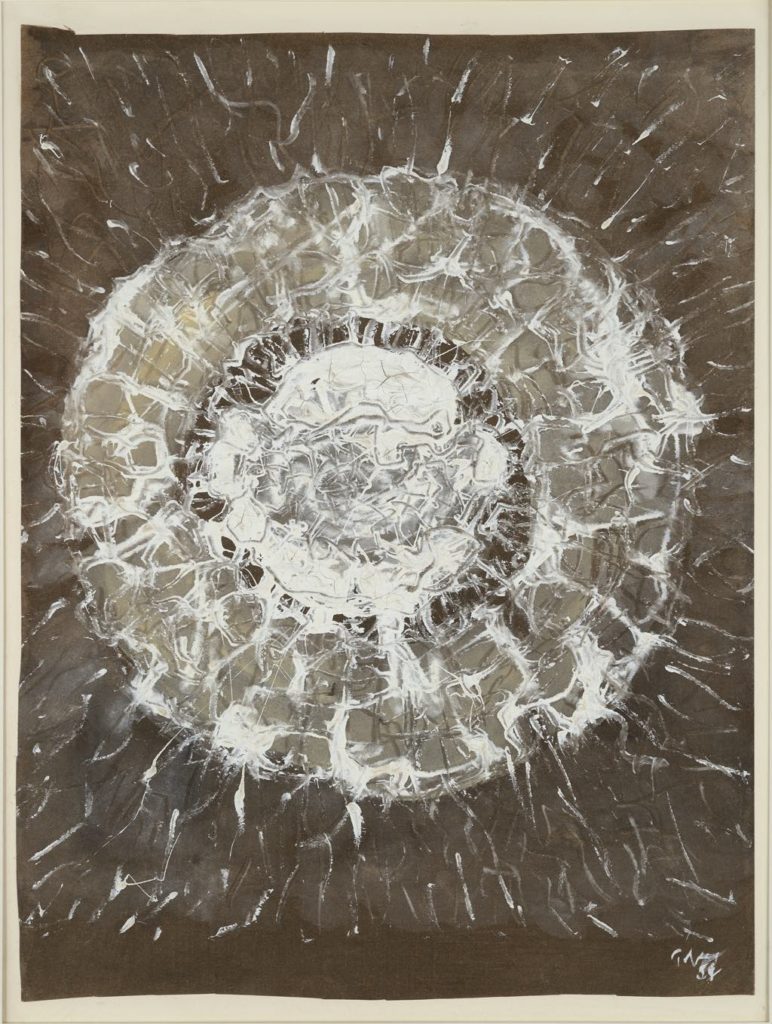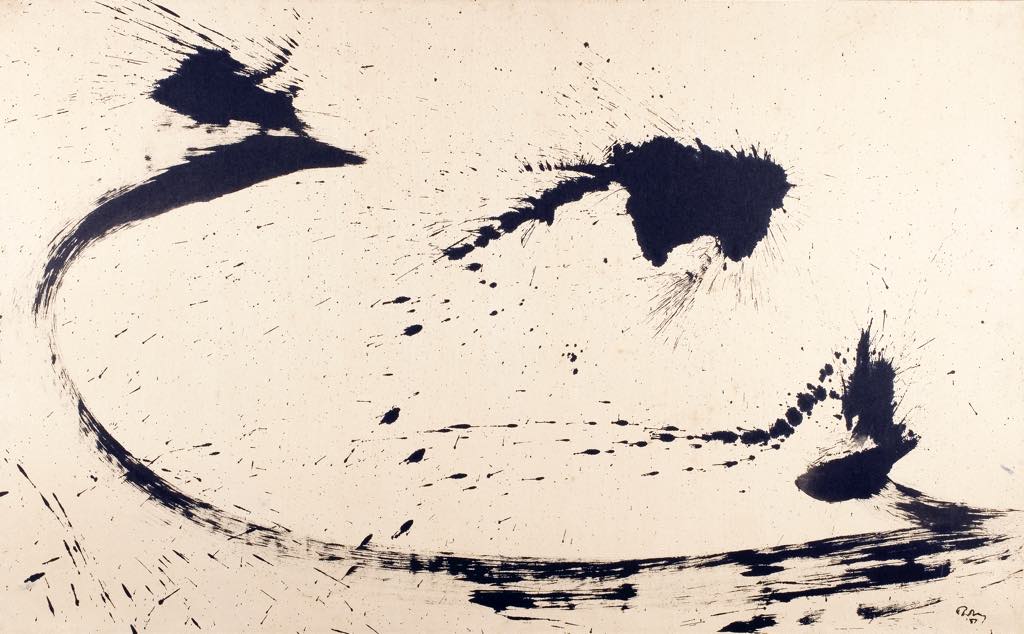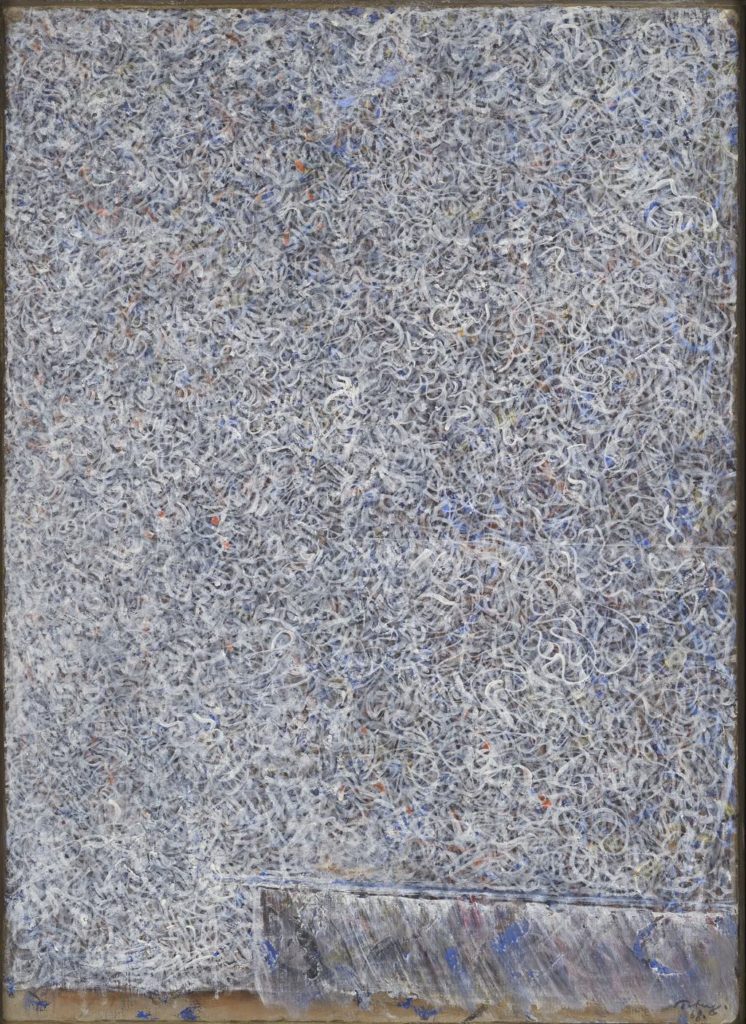
I rarely review gallery shows on Paris Update because there are just so many of them in the city that it would be outside the scope of the site, but every once in a while an exhibition goes beyond the usual commercial interests and presents a museum-style show that is worth a close look.
The Galerie Jeanne Bucher Jaeger, founded in 1925 by Jeanne Bucher and now run by her great-grandchildren Véronique and Emmanuel Jaeger, impressed me a year ago with a stunning show of the work of Portuguese artist Maria Helena Vieira da Silva (click here to see a video presentation of it) and is now showing “Tobey or Not To Be” at its beautiful Marais space. Many of the works by the American abstract painter Mark Tobey (1890-1976) belonged to Jeanne Bucher, who first brought Tobey to France, while others came from the private Bueil & Ract-Madoux Collection and the Centre Pompidou’s MNAM/CCI.
Although he was well-known in his lifetime and exhibited in most of the leading American museums, including MoMA, and Paris’s Musée des Arts Décoratifs in 1961, Tobey – dubbed the “American Picasso” by John Cage – has been more or less forgotten today.
Influenced by the work of Monet and himself an influence on other painters, including Jackson Pollock and Cy Twombly, Tobey was an outlier in his time in many ways: a homosexual who converted to the Baháʼí faith, he began his career as a fashion illustrator and traveled extensively, spending much time in Asia, the Middle East, Mexico and Europe, and eventually settling in Basel, Switzerland.
Tobey has been called the “father of Abstract Expressionism,” but these small-format, extremely subtle paintings don’t jump off the wall at you as the works of American Abstract Expressionists often do. This is not “action painting” (although there is a lot of activity in some pieces); It might better be called “meditation painting.”
Tobey himself rejected “isms” and “understood that abstraction and figuration were two sides of the same coin,” say the exhibition’s curators. They see him as a visionary who was out of step with his time, but times have changed, they point out, and his paintings now seem “more contemporary than ever.”
The exhibition offers a representative sampling of his different periods and influences, among them Eastern philosophy, calligraphy, Middle Eastern literature, music, nature and science.

Among the works on show is a series inspired by Japanese calligraphy, but the more representative works are the allover paintings. Some, like the monotype “Untitled, 1961,” call to mind ancient cave paintings (but with no figures), while other, very different works positively teem with quasi-figurative elements, like “Circular Composition” (1958). Some, like “Space Rose” (1959; pictured at the top of this page), look like explosions on paper.

Then there are the infinitely subtle “white writing” paintings, like “Escape from Static” (1968), in which the near-allover pattern of delicate white lines with a few daubs of color is abruptly interrupted at the bottom of the work by a horizontal line, below which the colors in the painting seem to rain down in streaks, an aberration that explains the title while offering relief from the uniformity of the rest of the work and suggesting the existence of another world.
“Tobey or Not To Be” can be visited online, but if possible, I recommend seeing it in person once the gallery reopens. The end date has been extended to February 12, 2021, and a bilingual French-English catalog, published by Gallimard, can be ordered from the gallery’s website.
Favorite